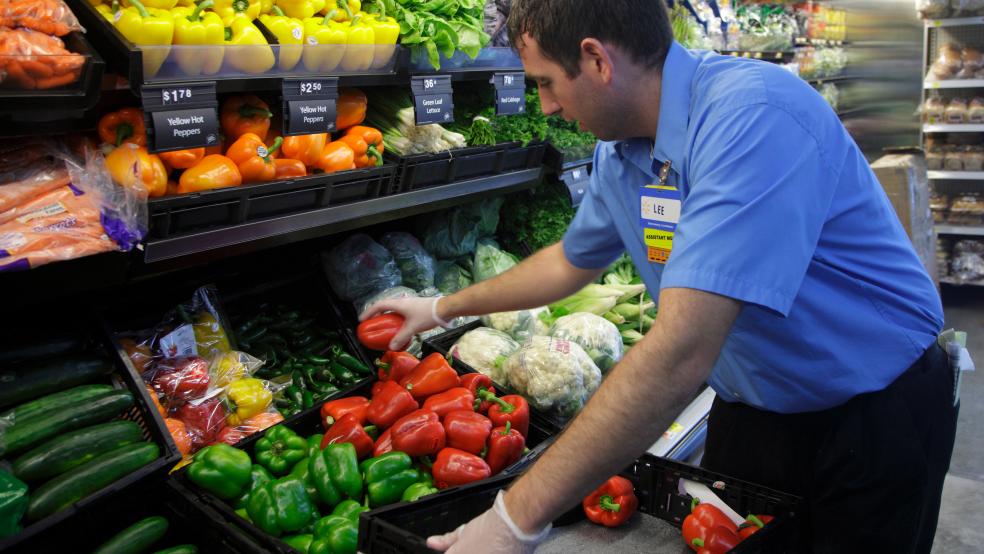Americans have been buying their food from grocery stores as we now know them for 99 years — but that tradition is changing.
One sign of the times: The great Atlantic & Pacific Tea supermarket chain, known as A&P, filed for bankruptcy last July for the second time this decade. The chain includes A&P, Best Cellars, Pathmark, Superfresh and Waldbaum’s.
It’s not that people don’t want to buy what’s available in stores like the A&P — they want to buy what they need from different sources like Trader Joe’s, Whole Foods, Fairway or specialty health food stores. And when possible, customers are buying “local” from farm stands and other non-traditional sources that supply artisanal and organic food choices.
Slideshow: The 25 Supermarket Products Americans Buy the Most
The real disruption for the $638 billion industry is a result of consumer lifestyle changes served willingly by technology. Example—ordering groceries online through Amazon, Fresh Direct, PeaPod or other food and grocery providers. Even Google is the business with Google Express, which shops for you at Fairway, Target, Costco and Walgreens among others, and has recently expanded its delivery beyond Silicon Valley, New York, Los Angeles, Boston, Chicago and D.C. to 25 million people in the Midwest.
Another example is the change in how — and when — people actually cook. Millennials, for example — all 78 million of them — like to gather in groups and eat out. They find one another on social apps, grab a pizza or burger and enjoy a relatively inexpensive meal with friends.
Not all is lost, however. Millennials also love watching the Food Network and have made cooking for friends a big part of their lives on weekends.
Related: Born in the USA — 24 Iconic American Foods
Even more important, savvy grocers aren’t letting Google and Amazon eat their lunch. Many, like D’Agostino’s in New York City have their own online service, complete with a mobile app so customers can order and have groceries delivered when they arrive home. And they’re loading up their inventory with healthful choices, working with local producers and catering to local ethnic tastes.
They’re also adding more custom services like dry-cleaning and laundry services so that the 99-year old “grocery” store becomes the go-to place online or on foot for all their customers.
Click here to see the 25 supermarket products Americans buy the most.
| SUPERMARKET STATS | |
| Number of employees | 3.4 million |
| Total supermarket sales-2014 | $638,338 billion |
| Number of supermarkets-2014 ($2 million or more in annual sales) | 37,716 |
| Net profit after taxes-2014 | 1.50% |
| Median Total Store Size in Square Feet-2014 | 46,000 |
| Median weekly sales per supermarket-2014 | $516,727 |
| Percentage of disposable income spent on food--USDA figure for | 2013 |
| food-at-home | 5.60% |
| food away-from-home | 4.30% |
| Weekly sales per square foot of selling area-2014 | $11.98 |
| Sales per customer transaction-2014 | $29.90 |
| Sales per labor hour (median, unweighted)-2014 | $148.00 |
| Average number of trips per week consumers make to the supermarket-2015 | 1.5 |
| Average number items carried in a supermarket in 2014 | 42,214 |
| Source: Food Marketing Institute |




